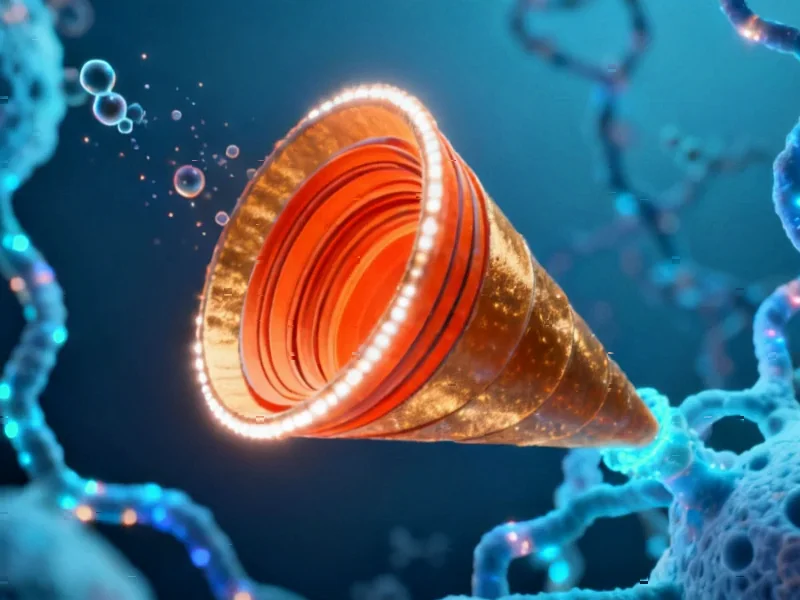Breakthrough in Biometric Age Verification
Smartwatch electrocardiogram (ECG) technology has emerged as a promising solution for age estimation, according to recent research findings. Sources indicate this approach could address growing concerns about privacy and reliability in digital age verification systems. The method leverages age-dependent characteristics in heart activity captured through consumer wearable devices, potentially offering a more secure alternative to traditional approaches like ID checks and facial recognition.
Table of Contents
The Growing Need for Age Assurance
Age estimation has become increasingly vital for regulating access to age-restricted services, particularly in protecting children online, analysts suggest. With major social media platforms enforcing minimum age requirements and countries worldwide implementing stricter regulations, the demand for effective verification methods has surged. The COVID-19 pandemic reportedly accelerated this need as online transactions multiplied exponentially, creating demand for privacy-preserving mechanisms that don’t rely on document verification.
Limitations of Current Methods
Traditional age estimation approaches using ID documents and databases raise significant privacy concerns and vulnerability to forgery, according to reports. While facial age estimation has achieved commercial deployment with accuracy exceeding 95% in some implementations, privacy advocates have expressed concerns about data collection. Other biometric methods using fingerprints, speech, ear characteristics, and iris patterns have achieved limited success, the research indicates.
Smartwatch ECG Innovation
Researchers have created a novel dataset using smartwatch ECGs from 220 individuals across a broad age range, according to their report. By testing various features and machine learning models, they achieved a mean absolute error of just 2.93 years—reportedly outperforming clinical ECG-based studies. The technology demonstrated peak accuracy during adolescence, when ECG changes are most pronounced, achieving 93-96% accuracy in binary age classification for the 13-21 age range.
ECG as a Physiological Signal
The electrocardiogram captures the electrical activity of the heart during the cardiac cycle and is considered more secure and difficult to spoof compared to other biometric modalities, analysts suggest. As an inherent physiological signal and real-time indicator of liveliness, ECG offers advantages for authentication purposes. Previous clinical studies have established that features such as wave amplitude, duration, electrical axis, and interval variability of ECG components change predictably with age.
Evolution of ECG Age Estimation
Early approaches to ECG-based age estimation relied on visual analysis of specific features like PR intervals, QRS complexes, and QT intervals, according to research literature. More recent methods utilize deep learning architectures, particularly 1D convolutional neural networks, that learn temporal and spatial dependencies directly from raw ECG traces. Previous studies using hospital-grade ECGs demonstrated moderate success but were limited by small, homogeneous datasets and lacked adaptability across populations.
Standardization and Regulatory Framework
A coordinated international effort has accelerated the standardization of age estimation technologies, driven by the urgent need to protect children online, sources indicate. The IEEE P2089.1 standard offers a comprehensive framework for age assurance systems, while the Global Age Assurance Standards Summit has served as a key forum for aligning international standards with local regulations. Participants at the most recent summit emphasized that age assurance technologies can be implemented in ways that are privacy-preserving, secure, and robust., according to further reading
Future Implications and Applications
The research findings highlight smartwatch ECG’s potential for accurate and privacy-respecting age estimation across various domains. Beyond age verification for online services, ECG-based age estimation has shown promise in cardiac diagnosis, with the difference between actual and predicted age correlating with cardiovascular outcomes. As wearable technology becomes increasingly ubiquitous, this approach could provide a seamless, continuous authentication method that respects user privacy while ensuring regulatory compliance.
Related Articles You May Find Interesting
- Jaguar Land Rover Cyberattack Reveals UK’s Systemic Vulnerability to Manufacturi
- OnePlus 15 Set for Strategic Price Drop in Key Markets, Leak Suggests
- Microsoft’s Quiet Phase-Out of Office Online Server Signals Cloud-First Future
- JLR hack ‘is costliest cyber attack in UK history’, experts say
- Amazon’s AI Startup Blind Spot Threatens Cloud Dominance as Solo Founders Rise
References & Further Reading
This article draws from multiple authoritative sources. For more information, please consult:
- http://en.wikipedia.org/wiki/Electrocardiography
- http://en.wikipedia.org/wiki/Biometrics
- http://en.wikipedia.org/wiki/Smartwatch
- http://en.wikipedia.org/wiki/Machine_learning
- http://en.wikipedia.org/wiki/Privacy
This article aggregates information from publicly available sources. All trademarks and copyrights belong to their respective owners.
Note: Featured image is for illustrative purposes only and does not represent any specific product, service, or entity mentioned in this article.



